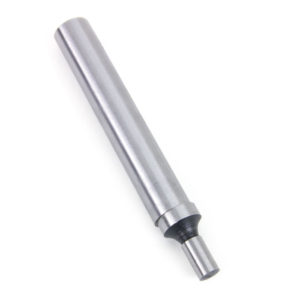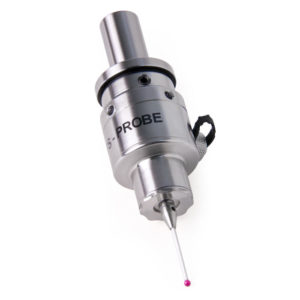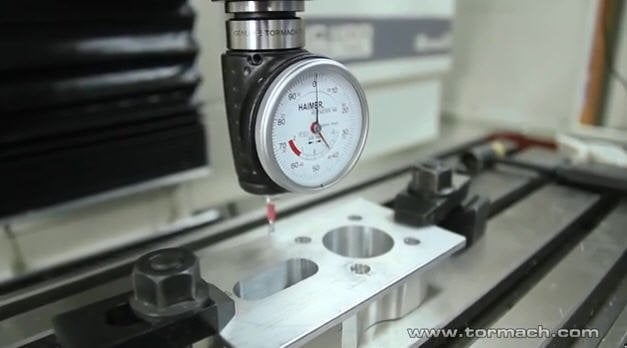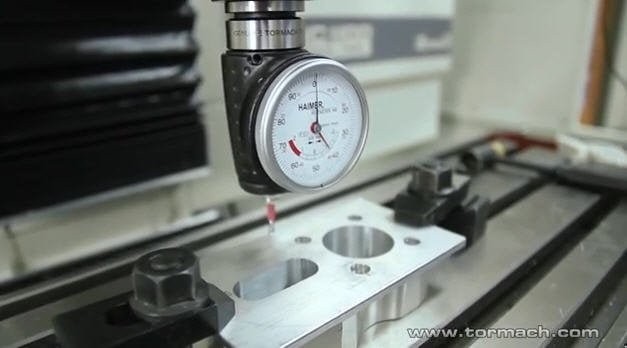Using a mill requires a lot of dedication to proper measurement and calculation, and to do so means finding the proper tools. Making sure your machine knows where your work is sitting is a vital to quality parts. There are a number of edge-finding and measurement devices, Here are the three most common ones we hear about from Tormach users.

Wiggle Edge Finders
Edge finders, sometimes known as wiggle edge finders, are dependent on your eyes as they near the part. The finder rotates in the spindle and a portion of the finder is off-center from the rest of the device – hence the “wiggle” in the name. As this wiggling portion moves closer to center via gently brushing against your work, the wiggling is reduced. When the movement is visually gone, you are on the edge of your work. These tools can be useful and are quite inexpensive, but they can be tedious to use and are reliant on your visual judgment for precision. On a budget, these are great tools for finding your workpiece, but we definitely recommend more measurable methods. 
Digitizing Probe
This probe provides more repeatability and, arguably, more precision than an edge finder. Believe it or not, this little beauty finds your workpiece for you. The Digitizing Probe talks with our PathPilot control system, and runs its own program to do it.
While everything is automated, many machinists are still advocates of “seeing is believing,” when it comes to measurement. Using the probe requires trust with the calibration, the software, and jumping in without a visual confirmation that things are accurate. But, like CNC versus manual milling, the tradeoff is the speed in automation that the probe provides. 
Haimer Zero Master
To many machinists, the Haimer is the Cadillac of measurement tools. With an accuracy of +/- 0.0005" and the ability to take measurements with the dial indicator, it’s easy to see why. Haimers are precision-made German tools that can be verified by the operator. Though the Haimer is more expensive than an edge finder, without the automation aspect, it is far less pricey than the digitizing probe. Having a visual display also lends good use of the Haimer to those who are new to or learning machining, since they can see exactly what is happening as they find zeros and define a part.
There is a vast array of measurement tools, and really, the choice is based on your preferences – budget, automation, repeatability, and convenience all need to be factored into deciding which measurement tool is best for you. We’ve even seen several Tormach customers with all three, so they have all the options depending on the circumstances. If you’re still unsure which tool to use, check out Daniel Rogge’s video about work offsets to see all three in action.


